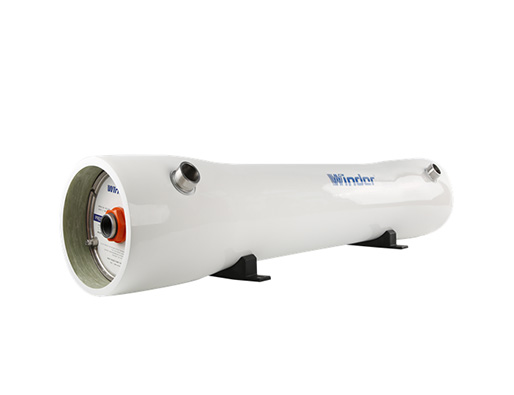1) Working principle:
Permeation----When the solution of different concentrations is separated by a semi-permeable membrane for two minutes, the solvent in the dilute solution will penetrate the semi-permeable membrane into the concentrated solution. Reverse osmosis-is a scientific method to reverse the natural osmosis process. On the side of the concentrated solution, when an external pressure greater than the osmotic pressure is applied, the solvent will reverse its original direction of osmosis and enter the dilute through the semi-permeable membrane from the side of the concentrated solution. In solution.
2) Water inlet requirements: Turbidity ≤ 2 degrees Water temperature: 5-35℃ SDI ≤ 5Fe ≤ 0.1mg/L
3) The system can use the most advanced membrane elements in the world, the desalination rate of a single membrane is ≥99%, and the system desalination rate is 97-99%, and can effectively remove suspended solids, organic colloids, organic matter, bacteria, viruses, In order to ensure the stable performance and long-term operation of the RO device, a regular automatic flushing device is set up for impurities such as heat sources.
4) The RO working pressures currently used in my country are ultra-low pressure membrane-7-10kg, low-pressure membrane-15kg, high-pressure membrane-55kg.
5) Membrane material: aromatic polyamide
6) Maintenance and cleaning of FRP membrane housings:
Maintenance: With the widespread application of water purification equipment in the water treatment industry, FRP Water Softening is gradually being valued. The cost of reverse osmosis membranes is one of the most concerning issues for consumers. Good maintenance can help extend the life of reverse osmosis membranes. New reverse osmosis membrane elements are usually soaked in 1% NaHSO3 and 18% glycerin aqueous solution and stored in a sealed plastic bag. If the plastic bag is not broken, it will not affect the life and performance of the reverse osmosis membrane if it is stored for about 1 year. When the plastic bag is opened, it should be used as soon as possible to prevent the NaHSO3 from being oxidized in the air, which may cause adverse effects on the components. Therefore, the film should be opened as far as possible before use.

Frp Water Softening
After the equipment test runs, we protect the reverse osmosis membrane in two ways. The equipment test machine runs for two days (15-24h), and then uses 2% formaldehyde solution for maintenance; or after running for 2-6h, uses 1% NaHSO3 aqueous solution to maintain the reverse osmosis membrane (the air in the equipment pipeline should be exhausted, To ensure that the equipment does not leak, close all inlet and outlet valves). Both methods can get satisfactory results. The first method is more expensive and is used when the idle time is long, and the second method for maintaining the reverse osmosis membrane is used when the idle time is short.
Cleaning: The general steps for cleaning reverse osmosis membrane elements are:
(1) Use a pump to pump clean, free chlorine-free reverse osmosis product water from the cleaning tank (or corresponding water source) into the pressure vessel and discharge it for a few minutes.
(2) Prepare the cleaning solution in the cleaning tank with clean product water. (3) Circulate the cleaning fluid in the pressure vessel for 1 hour or preset time.
(4) After the cleaning is completed, drain and rinse the cleaning box, and then fill the cleaning box with clean product water for the next step.
(5) Use a pump to pump clean, free chlorine-free product water from the cleaning tank (or corresponding water source) into the pressure vessel and discharge it for a few minutes.
(6) After flushing the reverse osmosis system, run the reverse osmosis system with the product water discharge valve open until the product water is clean, without foam or cleaning agents (usually 15 to 30 minutes).